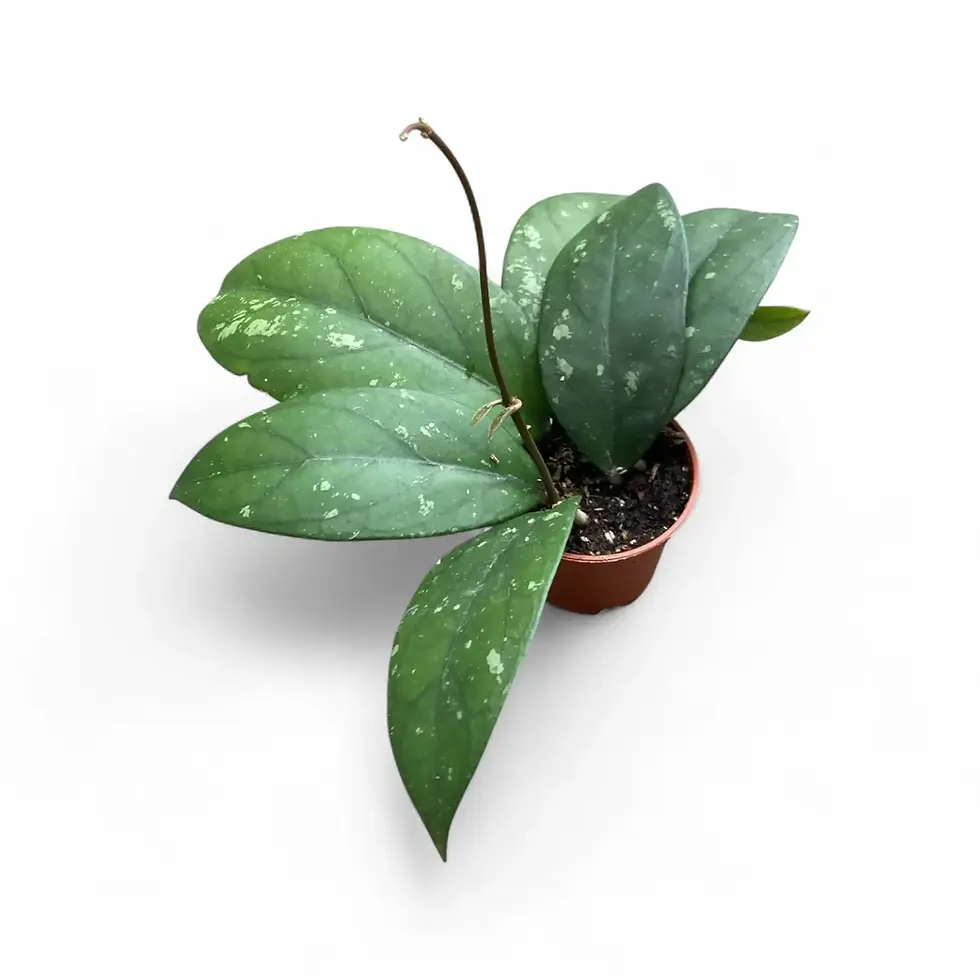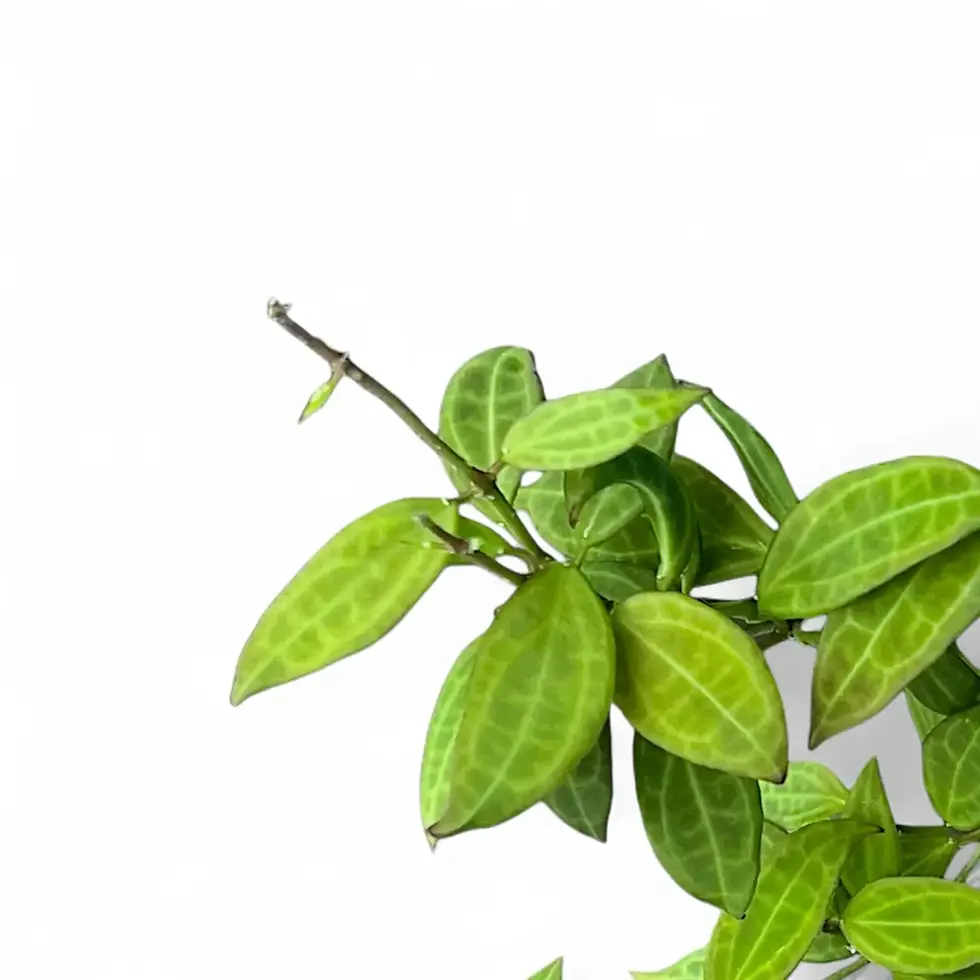Phlebodium aureum 'Blue Star' – Epiphytic Fern With Silvery Blue-Green Fronds
Phlebodium aureum 'Blue Star' is a standout houseplant with sculptural, wavy fronds in soft blue-green tones. Native to tropical forests from Florida to South America, this fern grows epiphytically on trees, drawing moisture from the air. Indoors, it’s easy-care, compact, and pet-safe — perfect for shelves, hanging pots, or kokedama. A must-have for fern lovers who want something fresh and architectural.
Recognizing Phlebodium aureum 'Blue Star': Form, Texture and Color
- Blue-Green Hue: Cool-toned fronds with a subtle waxy sheen that helps reduce water loss.
- Wavy, Lobed Fronds: Each leaf is deeply lobed and gently arching, giving the plant a soft yet wild look.
- Compact Habit: Grows up to 50 cm high and wide — ideal for smaller living spaces.
- Non-Toxic: Completely safe for pets and kids — no calcium oxalate or irritants.
Where Phlebodium aureum 'Blue Star' Comes From
- Native Range: Tropical and subtropical forests from Florida through Central America to Brazil.
- Habitat Type: Grows epiphytically on trees and rocky outcrops in humid, shaded environments.
- Natural Growth: Evergreen perennial with creeping golden rhizomes and year-round frond production.
How to Keep Phlebodium aureum 'Blue Star' Thriving Indoors
Light Preferences
- Prefers bright, indirect light but tolerates moderate shade.
- Direct sun may cause frond damage — protect from harsh exposure.
Watering Needs
- Keep substrate evenly moist without letting it get soggy.
- Let top 1–2 cm dry slightly between waterings.
- Use containers with drainage holes to prevent rot.
Humidity and Temperature
- Needs humidity over 50% — thrives in bathrooms or near other plants.
- Ideal range: 18–24 °C. Avoid cold drafts or heat stress.
Best Potting Mix
- Use a light, airy mix with bark, perlite, and sphagnum moss.
- Choose fern or orchid soil blends that support epiphytic growth.
Feeding Routine
- Fertilize once a month with a diluted, balanced liquid fertilizer.
- No need to adjust by season — focus on growth rate and appearance.
Propagation Made Simple
- Divide rhizomes during repotting — include roots and healthy fronds per section.
- High humidity helps new divisions settle in faster.
Maintenance Tips
- Remove dead or yellowing fronds regularly to keep the plant tidy.
- Refresh soil if it becomes compacted or loses structure.
Growing in Semi-Hydro
- Does well in LECA or pon as long as rhizomes stay above water level.
- Keep humidity stable and monitor root health closely.
Troubleshooting Phlebodium aureum 'Blue Star'
Pest Concerns
- Watch for spider mites and mealybugs in dry air — treat with neem oil or insecticidal soap.
- Boost humidity to prevent recurring infestations.
Leaf Problems
- Brown tips usually signal low humidity or erratic watering.
- Yellowing fronds often result from poor drainage or overwatering.
Preventing Root and Fungal Issues
- Use loose, well-draining soil and avoid waterlogging.
- Ensure good airflow around foliage — treat any persistent spots with an appropriate fungicide if needed.
Extra Details About Phlebodium aureum 'Blue Star'
- Adaptable to mounted displays or kokedama — true to its epiphytic roots.
- Blue tint comes from a wax layer that limits water loss and light stress.
- Closely related to other Polypodiaceae species known for their air-rooting habits.
Botanical Etymology of Phlebodium aureum
- Phlebodium: From Greek "phlebos" (vein) and "odous" (tooth), describing the veined fronds.
- Aureum: Latin for "golden," referencing the color of the spore clusters.
- Reclassified from Polypodium to Phlebodium by J. Smith, published in J. Bot. (Hooker) 4: 59 (1841).
Add Phlebodium aureum 'Blue Star' to Your Collection
If you’re after a low-maintenance, visually calming, and pet-friendly houseplant, Phlebodium aureum 'Blue Star' is a solid pick. Easy to grow and full of soft color, this fern fits effortlessly into modern homes. Get yours today and enjoy its chill, tropical energy year-round.
Phlebodium aureum 'Blue Star'
Phlebodium aureum 'Blue Star' comes in following sizes:
Baby Plant – is approximately 15 cm tall and comes in a ⌀ 6 cm pot
M – is approximately 30 cm tall and comes in a ⌀ 12 cm pot
L – is approximately 40 cm tall and comes in a ⌀ 17 cm pot
































